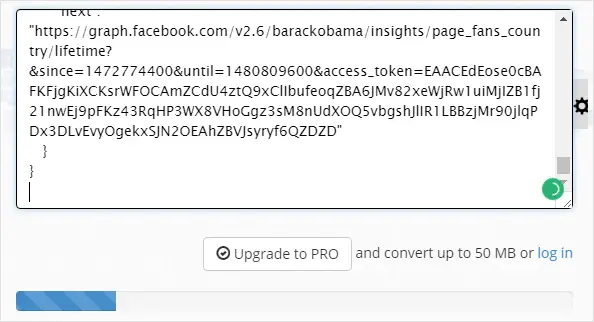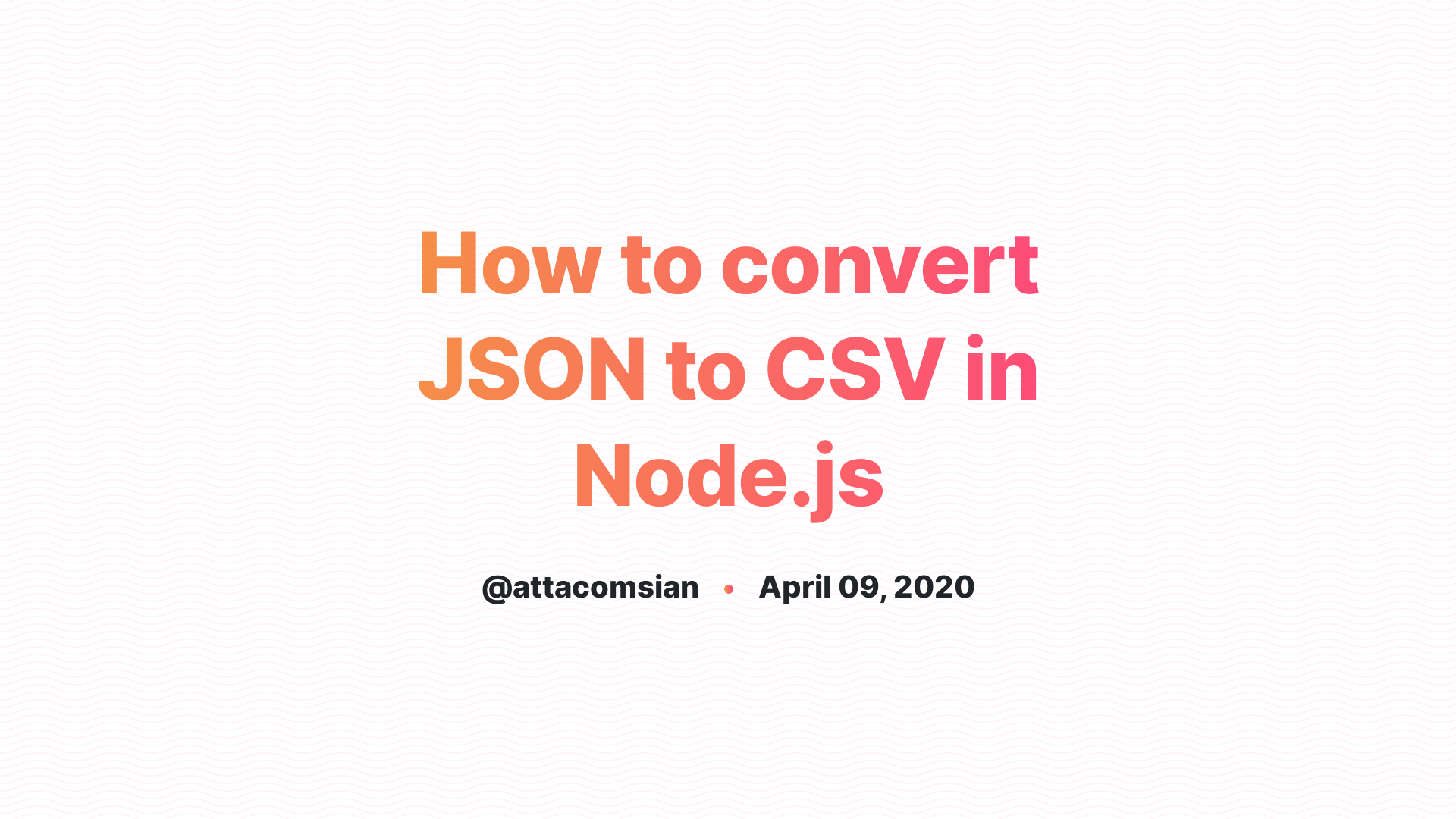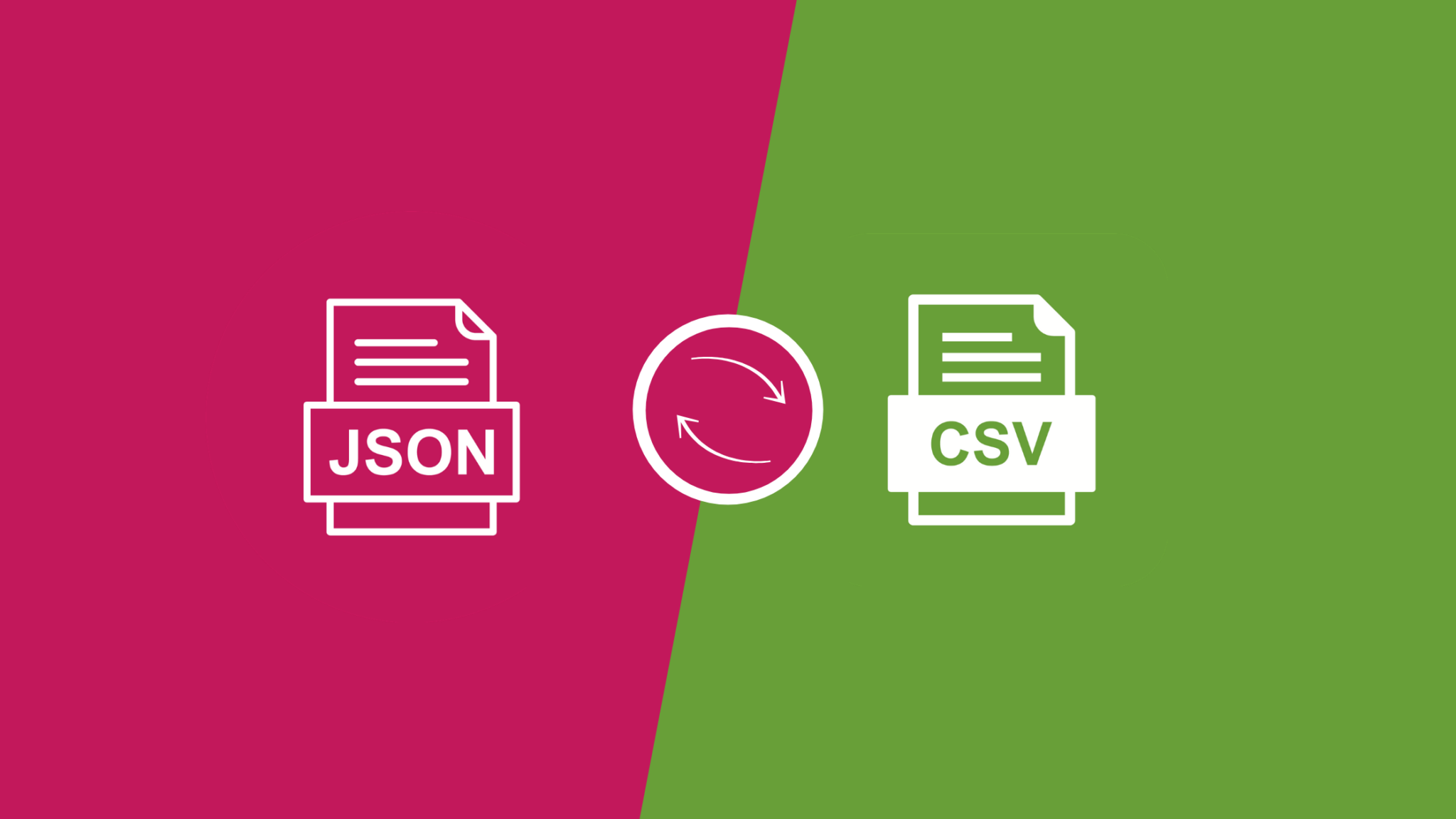

Converting JSON to CSV helps to clean and format data before displaying it in reports and documents.ĭata analysis: CSV files have excellent compatibility with tools used for data analysis like Excel or Google Sheets. In such cases, converting JSON data to CSV provides a readable format that can be easily shared and understood.Ĭreating reports: CSV files allow you to display data in tabular form, which makes it easier to create reports. Sharing data with a non-technical team member: Sometimes team members may not be comfortable with JSON data because it’s not the most readable format. Here are a variety of scenarios when JSON to CSV is an essential task for developers: It’s also an effective way to extract data from JSON files in a readable format.

CSV, on the other hand, is used for handling large data sets like spreadsheets and databases.Ĭonverting JSON to CSV has numerous advantages, including fast processing times, smaller file sizes, and easy portability across different platforms. The JSON format is used for exchanging data between a client and a server, web APIs, and mobile applications.

JSON to CSV conversion simply means turning JSON-formatted data into CSV-formatted data. In this article, we’ll explore JSON to CSV conversion, its uses, and common misconceptions among developers. However, it’s not uncommon to convert JSON to CSV or CSV to JSON, depending on the specific requirements of a project. JSON data is typically used for client-server communication, whereas CSV files are widely used because they’re easy to read and write, and can be opened in various programs like Excel and Google Sheets. Now, let's use Jackson's CsvMapper to read our CSV file into a List of OrderLine objects.Exploring JSON To CSV: A Handy Tool for DevelopersĪs a developer, you’re likely familiar with JSON and CSV data formats - both of which are crucial for handling, analyzing, and manipulating large data sets. When we run this sample code, our example JSON document is converted to the expected CSV file. writeValue(new File("src/main/resources/orderLines.csv"), jsonTree) Then, we create a CsvMapper with our CsvSchema, and finally, we write the jsonTree to our CSV file: CsvMapper csvMapper = new CsvMapper()

JsonNode firstObject = jsonTree.elements().next() įirstObject.fieldNames().forEachRemaining(fieldName -> ) ĬsvSchema csvSchema = csvSchemaBuilder.build().withHeader() To do this, we create a CsvSchema Builder and set the column headers to match the JSON field names: Builder csvSchemaBuilder = CsvSchema.builder() This determines the column headers, types, and sequence of columns in the CSV file. First, we use Jackson's ObjectMapper to read our example JSON document into a tree of JsonNode objects: JsonNode jsonTree = new ObjectMapper().readTree(new File("src/main/resources/orderLines.json"))


 0 kommentar(er)
0 kommentar(er)
